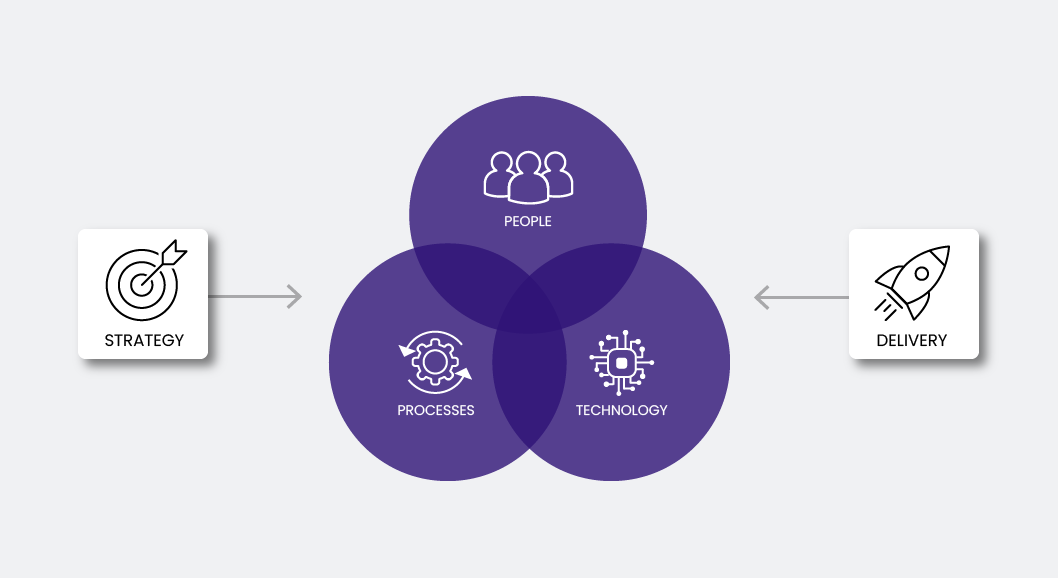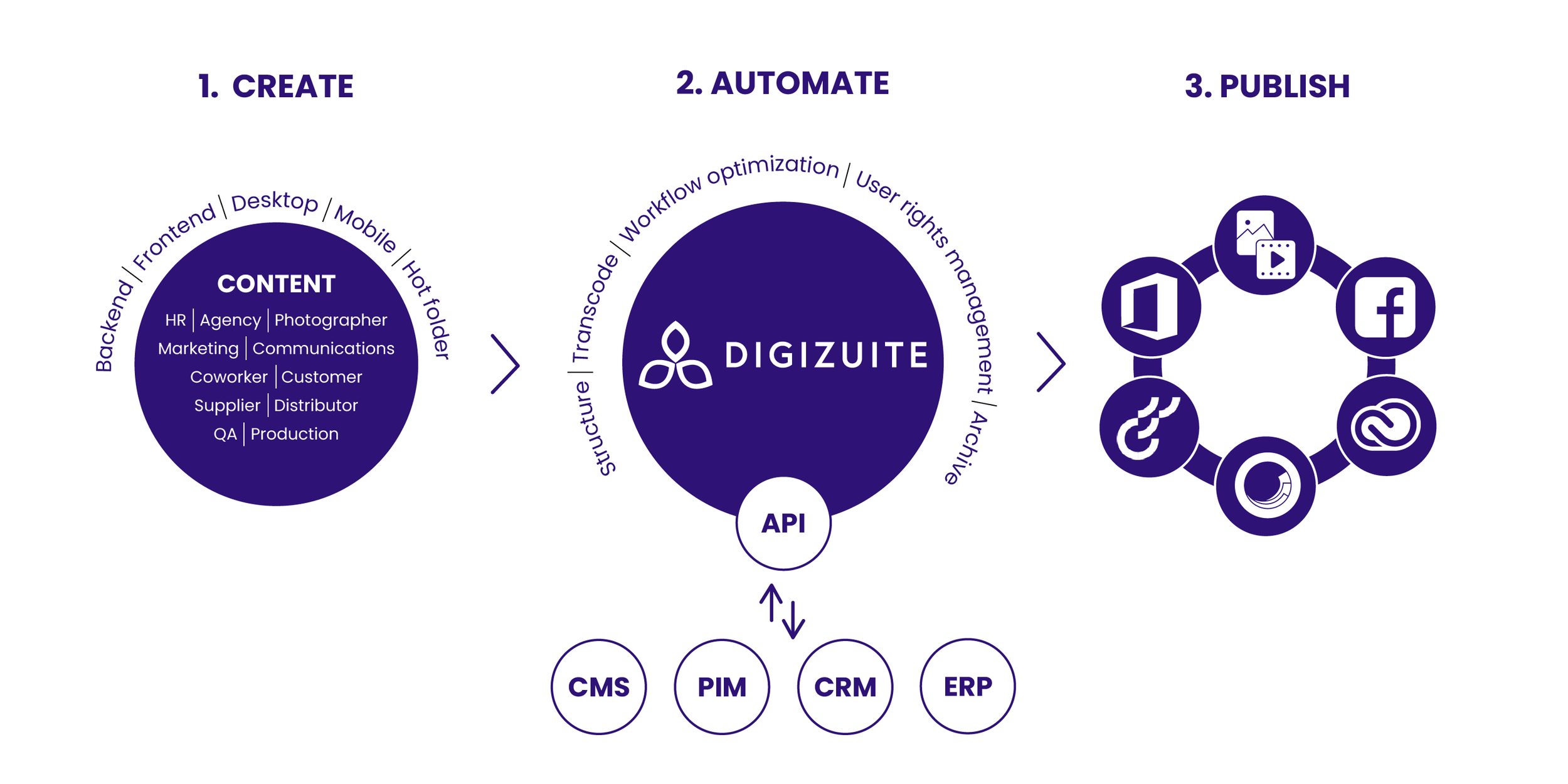It’s no secret.
The key to any successful digital marketing strategy today needs to involve content.
And most companies know this – which is why they’re currently spending between 25-30% of their marketing budget solely on content itself.
The motivation behind this investment is all rooted in the facts and statistics:
> 67% of marketers say that content marketing significantly increases both leads and demand
> 72% state that content marketing contributes to educating their target audience
> 63% state that it builds loyalty with existing customers clients
But the more content being created, the more content management challenges – going beyond just the production and the distribution of it:
As a result, these challenges taken together mean…
Content mismanagement – which is both costly (we’re talking millions) and negatively affects the general productivity of all your content marketing-related efforts.
Companies should therefore spend time finding new ways to improve their content operations, either that’s via better documented routines when dealing with content, or implementing tools and technology that get content processes running more efficiently.
Enter tools like digital asset management – which has quickly become one of the most leading MarTech tools enterprises use today.
In this article we explain what content operations are, how DAM helps streamline content operations and 4 best practices for managing all the moving parts of your content operations.
-
Table of contents
-
What are content operations
-
Streamlining content operations with DAM
-
4 best practices for improving content operations
-
Concluding notes
-
What are content operations?
Content operations are the combined structure of process, people and technology that enables a company to manage and maintain its content lifecycle – in the most efficient way possible.
-
In other words, how a company manages the:
-
Strategy
-
Creation
-
Management
-
Delivery
-
Distribution
-
…of all their content.
Content operations include three core areas that allow departments and teams to map out, create, publish and analyze different types of content for different types of channels:
1. People: Those carrying out a task, and what their responsibilities and roles are
2. Process: What duties and functions are needed to complete a task or project
3. Technology: Which tools are needed to help create a complete content operations structure
And content ops significantly affect every single unit in the enterprise.
Whether it be HR, sales or marketing – whoever is a part of the content ecosystem.
Technology streamlining content operations: Digital Asset Management
From CMS software to marketing automation – there’s no shortage of tools that will assist in one way or another when it comes to optimizing either the creation, management or distribution of content. Aka – supporting the entire content operations of your organization.
But in order to significantly improve enterprise content operations and reach your omnichannel ambitions, the key is to find tools that will bring together the three key elements of your content processes and systems in place.
Which is where tools like digital asset management (DAM) come into play.
A DAM system does not only serve as a central hub of all company digital assets, ready for users to find in order to edit, manage and deliver to relevant stakeholders or on various channels.
The tool also helps you scale content operations by combining the fundamental pieces of content operations, namely the people, the processes and the technology – all in one place.
Below we outline 4 best practice tips when it comes to scaling your content operations, with the help of DAM.
4 Best practice tips to scale your content operations
Build your single source of truth
In order to improve and strengthen your content operations – you need to create a “single source of truth”.
Because here’s the thing:
-
Marketers have a hard time when it comes to efficiently finding the content they need, when they need it:
-
36% of marketing data is often dispersed across multiple different sources in an organization, and
-
Marketers often have to look into 9 different places in order to find the most up-to-date information on what’s currently going on with their marketing incentives and activities.
-
Just picture the scene where you possibly have multiple external stakeholders involved. Which typically is the case for manufacturing companies (dealing with suppliers, distributors, end sellers etc – the list goes on).
With DAM, you only have one place where all users belonging to an organization can easily manage assets as well as share digital assets internally or externally.
That means the same access to content for all stakeholders involved – equipped with the most up-to-date content, since you control exactly who has access (and who doesn’t).
And by enabling features like automated tagging of metadata, technologies like DAM help you avoid spending hours and hours looking for that one piece of content.
Instead, you (and an end seller for example) get your hands on it right away, right when you need it at that crucial “make-it-or-break it” moment in your marketing campaign.
With only one secure and strategic archive filled with photos, videos, PDF’s, audio files, you name it – it’s never been easier for all teams and departments to stay aligned in terms of the entire content production process.
Automate your content workflows
If you’re not already automating most of your marketing activities and workflows, you could be falling behind on the trends.
Just from 2021 to 2022, there was a 35% increase in the implementation of more marketing automation.
Adding on, 58% of B2B companies are planning on automating more in the future. Makes sense, as it has proven to increase sales productivity by over 14.5%.
When it comes to introducing automation to your day-to-day content operations, the focus should be on cutting down on those repetitive and mundane tasks (like searching for content or consistently distributing it on all the relevant channels).
-
With DAM, it’s never been easier to cut down on those time-consuming tasks and activities, as you can automate all your content operations from one single place:
-
You can eliminate a lot of manual tasks, like having to repeatedly create and save variations of the same exact image for various distribution channels, and
-
With the right integrations, you can also eliminate the need to switch from tab to tab to transfer content between systems
-
DAM’s workflows and automations enable you to move your assets as seamlessly as possible throughout your entire content operations ecosystem, from creation to review and distribution.
You can also incorporate check steps that route content to the appropriate person before publication, ensuring accuracy and on-time approvals.
Leverage content analytics for new insights
Another way to continue scaling and improving your content operations is by leveraging content analytics.
That way you have the needed insights to take your content processes in the right direction and make the right decisions – since you know what works and what doesn’t.
The insights and metrics you need to know which assets are being downloaded, streamed, and shared most frequently are available in most modern DAMs. Not only across internal departments, but also across regions and continents.
You can easily see
1. How people are searching for assets
2. The downloading frequency of both single and grouped assets
And thanks to Digizuite DAM’s integration Power BI dashboard, you can quickly make reports and view the location of where and which assets are being downloaded.
What this does is make it ten times easier for users to have access to the information they need about each individual asset and how its performing.
The result?
A more high-level outline and overview of content performance.
Define user rights, responsibilities and roles
It’s crucial that user rights, roles and responsibilities are clearly defined in order for your content operations to go smoothly.
Otherwise, you risk dealing with bottlenecks, deadlines being missed or in general just a lack of responsibility in terms of the who, what and where’s content-wise.
-
DAM makes it easy to assign user rights and responsibilities for every piece of content that’s implemented in the workflow:
-
DAM system administrators can easily define roles, users and groups using rights management tools, which means higher levels of quality and version control
-
DAM also helps you meet brand compliance requirements by checking that every asset contains the appropriate disclaimers, accurate terminology and terms and conditions
-
For example, the automatic approval-for-use workflow in Digizuite DAM helps you avoid unintended mistakes of using the wrong or outdated digital asset.
This tight control is fundamental for highly regulated industries like the life sciences, where you always want to avoid false claims and off-label marketing (that can come about when using the wrong content, or when the wrong people get their hands on certain pieces of content).
This is also particularly useful for retail companies managing tons of teams spread across different locations. The need to stay consistent and on brand is key.
DAM helps retailers specify access permission and user rights to guarantee that your brand speaks the right message and is consistent across all platforms. Teams across the whole world can have that quick access to approved brand assets when introducing new products in various markets.
DAM software can also speed up and automate the rights management process to check content for their expiry dates, notifying you when a piece of content has expired in order for you to remove it.
Conclusion
Making sure that your content operations run smoothly in the best way possible is key in order to continue scaling ahead.
Tools like DAM can help you bring together the people, processes and technology that are all involved with bringing your content strategy to life and to your target customers.
DAM helps you with four best practices when it comes to scaling your content operations:
1. Crafting a single source of truth for all assets
2. Automating your content workflows
3. Leveraging content analytics to make insights accessible to all
4. Defining user rights and roles to ensure consistency and no faulty content delivery
Improving your content operations doesn’t have to be difficult or hard to implement.
We’d love to tell you more about Digizuite DAM – book a demo and download our white paper about the five reasons you should use DAM here.











